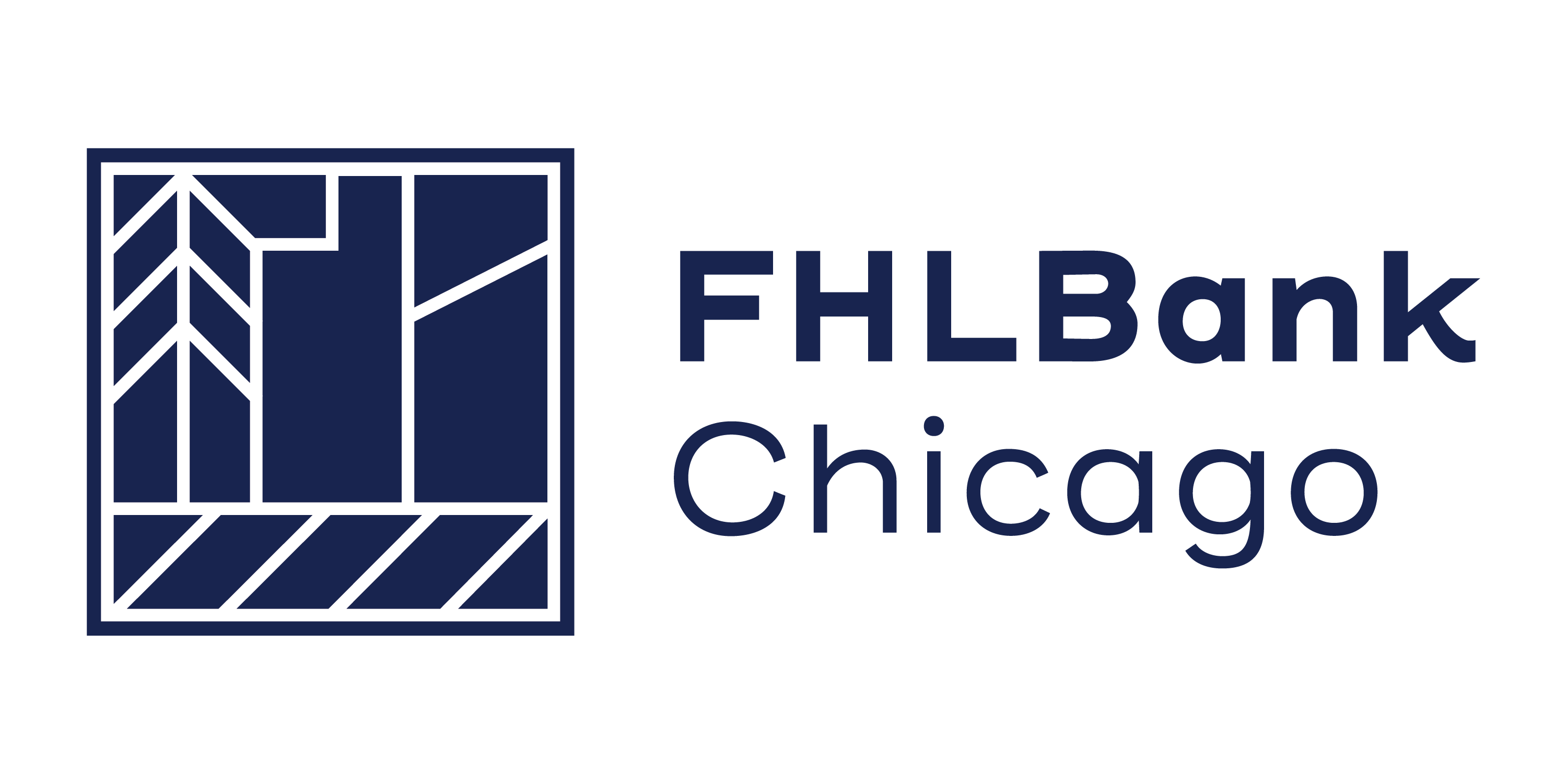Spread Investing Strategies for Insurance Companies: Q2 2019
At its core, insurance is a spread business—it involves buying assets whose yield, over time, will exceed the cost of the company’s liabilities. Insurance companies use spread strategies, which pair assets gathered through a variety of channels with duration-matched funding, to earn incremental income from their investment portfolios. Their chief concern regarding such strategies is the need to fund these purchases in the most cost-effective way possible, while minimizing any unanticipated risks.
Membership in the Federal Home Loan Bank of Chicago (FHLBank Chicago) provides access to a reliable funding source for spread investing strategies, with low rates that reflect our status as a government-sponsored enterprise (GSE). Advances (our loan products) are available in many flexible structures that can be used to mirror the cash flows of a variety of asset types to match-fund an asset or asset portfolio, or to achieve a desired asset-liability management result. Advance types include fixed rate, floating rate, amortizing, and prepayable.
The spread between assets and advances will depend on a member’s individual preference for risk and potential return, as reflected in the graph below.
Key Takeaways
- Membership in the FHLBank Chicago provides access to a reliable, low-cost funding source for spread investing strategies.
- Rating agencies have granted insurance companies operating leverage treatment for their matched-funding spread investing transactions, with or without a funding agreement, if they could demonstrate the necessary cash flow and risk conditions.
- The FHLBank Chicago offers many flexible funding structures that can be used to mirror the cash flows of a variety of asset types to match-fund an asset or asset portfolio, or to achieve a desired asset-liability management result.
- Return on capital for spread investing transactions for FHLBank Chicago advances ranges from low double digits to over 100%.
NAIC’s Revised Capital Charge Framework Doubles Transaction Returns for Life Insurers
Effective with year-end 2018 risk-based capital (RBC) reporting, the National Association of Insurance Commissioners (NAIC) implemented a new capital charge framework with improved RBC charges for spread investing transactions funded with FHLBank advances that are embedded in a funding agreement.
Previously, the return on invested capital for these transactions was depressed by RBC capital charges that fully charged all the collateral required to be pledged to the FHLBank under an advance/funding agreement. The reduced capital charges more than double the return on invested capital for those transactions.
The NAIC’s new capital charge framework reduces charges on the collateral used in the transaction and eliminates them for the portion of collateral equal to the advance. In effect, this framework only assesses capital charges on over-collateralization of the advance. The over-collateralization amount varies depending on the type of collateral used, but typically it only represents 2% to 20% of an advance. In the illustration below (Example A), a $10 million advance is collateralized by assets that have a 20% haircut. Under the old framework, a life insurance company pledging those assets to the FHLBank Chicago would have incurred a $162.5K RBC charge; however, under the new framework the RBC charge is reduced by 94%, to just $10.0K.
Financial or Operating Leverage?
From a rating agency perspective, an asset portfolio may qualify for operating leverage treatment (as opposed to financial leverage) if its duration is closely matched to the tenor of the associated funding advance and the liquidity and credit risk of the assets are moderate. Life insurance companies can embed these advance transactions in a funding agreement, allowing the advance to be treated as operating leverage. Many of the FHLBank Chicago’s life insurance company members utilize funding agreements as part of their overall spread investing strategy. Some insurance companies have been granted operating leverage treatment without the use of a funding agreement, by demonstrating to the rating agencies that they meet the necessary cash flow matching and risk conditions, and can continue to operate within these parameters for the life of the transaction.
Example A: Spread Investment
A life insurer takes a $10 million, 10-year, 3.1% FHLBank Chicago advance using a funding agreement structure. Assuming the insurer is required to purchase FHLBank Chicago stock equal to 2% of the advance to support the advance, net proceeds of the advance will be $9.8 million. These proceeds are used to purchase $9.8 million of commercial mortgage-backed securities (CMBS) with a 10-year average life that yield 4.5%, resulting in incremental spread of 140 bps (4.5%–3.1%). Because the advance and purchased asset are so closely matched in duration, the transaction may be placed in a funding agreement. This ensures that the life insurance company receives operating leverage treatment for the transaction, from a rating agency’s perspective. The transaction is collateralized with a pledge of $12.5 million of commercial mortgage loans from the insurer’s existing investment portfolio that receive a 20% haircut. The return on invested capital for the transaction is robust, at over 100%.
Example A, Table 1: Transaction Capital Charges
Example A, Table 2: Transaction Income and Return on Capital
Example B: Spread Investment
A property and casualty insurer takes a $10 million, 10-year advance with the FHLBank Chicago that costs 3.1%. Assuming the insurer is required to purchase FHLBank Chicago stock equal to 2% of the advance to support the advance, net proceeds of the advance are $9.8 million. These proceeds are used to purchase $9.8 million of CMBS yielding 4.5%, resulting in incremental spread of 140 bps. Even with the higher required NAIC capital charges for property casualty insurers (asset charge, FHLBank Chicago stock charge, and collateral pledge charge), the insurer’s return on invested capital is still reasonable, at 20.6%.
Example B, Table 1: Transaction Capital Charges
Example B, Table 2: Transaction Income and Return on Capital

To Learn More
Contact your Sales Director at membership@fhlbc.com to find out more about the products, strategies, and tools you can use to strengthen your insurance company.
Contributors

Bruce Cox
Director, Client Strategy, Member Strategy and Solutions

Ashish Tripathy
Managing Director, Member Strategy and Solutions
Disclaimer
The scenarios in this paper were prepared without any consideration of your institution’s balance sheet composition, hedging strategies, or financial assumptions and plans, any of which may affect the relevance of these scenarios to your own analysis. The FHLBank Chicago makes no representations or warranties about the accuracy, currency, completeness, or suitability of any information in this paper. This paper is not intended to constitute legal, accounting, investment, or financial advice or the rendering of legal, accounting, consulting, or other professional services of any kind. You should consult with your accountants, counsel, financial representatives, consultants, and/or other advisors regarding the extent these scenarios may be useful to you and with respect to any legal, tax, business, and/or financial matters or questions. Certain information included in this paper speaks only as of a particular date or dates and may have become out of date. The FHLBank Chicago does not undertake any obligation and disclaims any duty to update any information in this paper.Federal Home Loan Bank of Chicago | Member owned. Member focused. | May 2019

